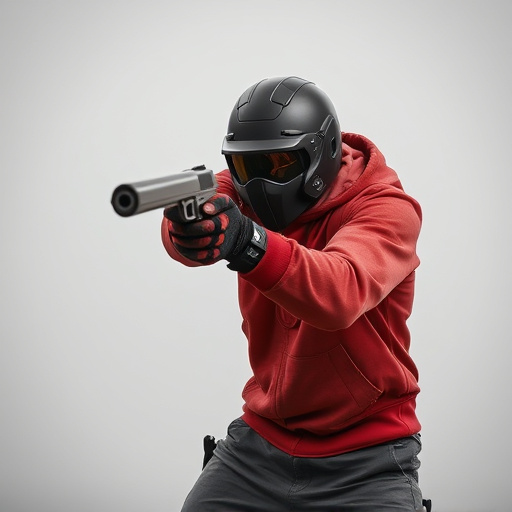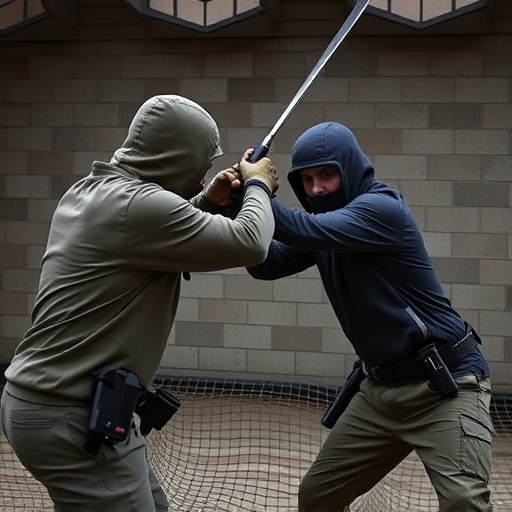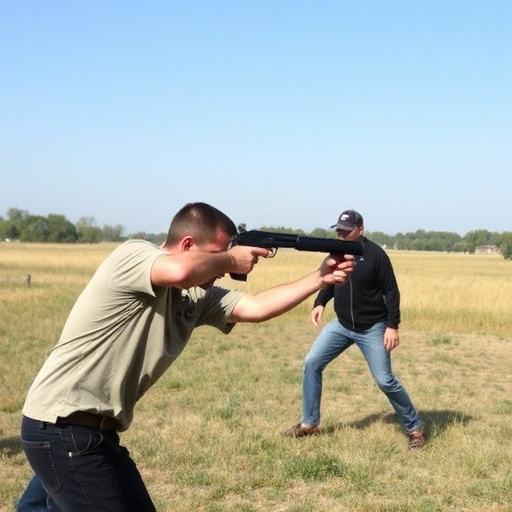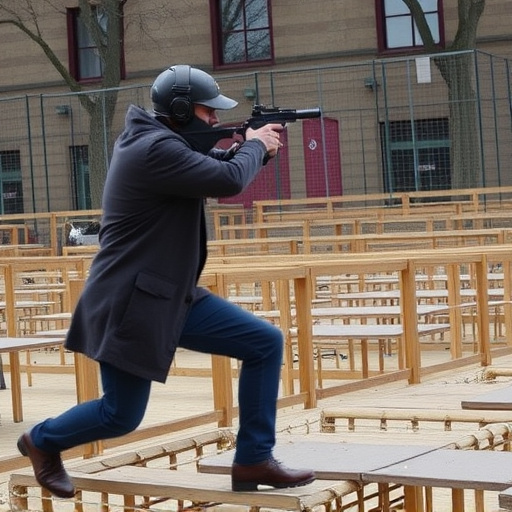Police-grade stun guns prioritize safety and effectiveness through adjustable electrical pulse frequencies (up to 1500 Hz+). Higher frequencies offer more powerful, immediate shocks but require closer contact, while lower frequencies (100-300 Hz) balance safety and deterrence at a distance. Understanding these pulse rates is crucial for selecting the right stun gun based on individual needs, local laws, and manufacturer reputation.
“Unveiling the Power Behind Police-Grade Stun Guns: Exploring Electrical Pulse Frequency. This comprehensive guide delves into the critical aspect of stun gun performance—electrical pulse frequency. From understanding the basics to examining the impact on effectiveness, we dissect how different frequencies translate into real-world applications. Discover the common pulse rates in modern devices and learn essential factors for choosing the right police-grade stun gun options based on these specifications.”
- Understanding Electrical Pulse Frequency: The Basics
- Police Grade Stun Guns: A Comprehensive Overview
- How Pulse Frequency Impacts Stun Gun Effectiveness
- Common Pulse Frequencies in Modern Stun Devices
- Factors to Consider When Choosing a Stun Gun Based on Pulse Frequency
Understanding Electrical Pulse Frequency: The Basics

Electrical pulse frequency is a critical factor in determining the effectiveness of a stun gun. It refers to the number of electrical pulses delivered per second, measured in Hertz (Hz). Police-grade stun guns typically offer various options for pulse frequency, ranging from lower to higher Hz values. Understanding this concept is essential when considering different Police Grade Stun Gun Options.
Lower frequency pulses may provide a stronger jolt but could potentially cause more muscle contractions and reduce the individual’s ability to move effectively. Conversely, higher frequency pulses can deliver multiple, rapid shocks, which might be more suitable for neutralizing an attacker without causing permanent harm. The right choice depends on the specific needs of the user and the situations they may encounter.
Police Grade Stun Guns: A Comprehensive Overview

Police-grade stun guns are designed to be powerful and reliable tools for law enforcement officers, offering a non-lethal means of self-defense in high-risk situations. These stun guns are engineered to deliver precise electrical pulses with adjustable frequencies, ensuring maximum effectiveness against aggressive assailants. The market offers a range of Police Grade Stun Gun Options, each designed to cater to specific needs and preferences.
From compact models suitable for easy carrying to more robust designs capable of enduring harsh conditions, these stun guns come in various shapes and sizes. Advanced features like LED lights for visibility in low-light environments and multiple firing modes enhance their functionality. The ability to adjust the pulse frequency allows officers to adapt to different scenarios, ensuring optimal performance and safety during critical encounters.
How Pulse Frequency Impacts Stun Gun Effectiveness

The pulse frequency of a stun gun plays a critical role in determining its effectiveness. Higher pulse frequencies can penetrate through clothing and skin more easily, delivering a stronger electric shock. This is particularly important for self-defense scenarios where the user might not have direct contact with the assailant. Police grade stun guns, known for their reliability and power, often feature advanced circuitry that allows for adjustable or variable frequency settings, enhancing versatility in different situations.
Among the available police grade stun gun options, devices with higher pulse frequencies (up to 1500 Hz or more) have been shown to be more effective at incapacitating attackers. This is because of the increased chances of disrupting muscle control and causing immediate disorientation. Lower frequencies, while still potent, may not deliver the same level of impact, making higher frequency stun guns preferable for those seeking maximum effectiveness in self-defense tools.
Common Pulse Frequencies in Modern Stun Devices

In modern stun devices, the electrical pulse frequency plays a critical role in determining their effectiveness and safety. Common pulse frequencies range from 100 to 300 pulses per second (Hz). For police-grade stun gun options, frequencies often fall within this range, with some advanced models offering customizable settings. This allows users to adjust the intensity of the shock based on specific situations, ensuring optimal performance while minimizing unintended harm.
The choice of pulse frequency is influenced by factors such as the device’s design, intended use, and regulatory requirements. Higher frequencies (up to 400 Hz) are typically found in specialized military-grade stun guns designed for intense, prolonged shocks. In contrast, lower frequencies (around 150-200 Hz) are more common in consumer-oriented police-grade stun guns, balancing effectiveness with safety and comfort. These variations cater to diverse user needs, from law enforcement professionals to individuals seeking personal protection.
Factors to Consider When Choosing a Stun Gun Based on Pulse Frequency

When considering a stun gun, pulse frequency is one of the key factors to evaluate, especially when exploring police-grade stun gun options. The frequency, measured in Hertz (Hz), represents the number of electrical pulses emitted per second. Higher frequencies typically deliver more powerful shocks, but they may also require closer contact with the target. For self-defense scenarios, a stun gun with adjustable pulse settings can offer versatility—lower frequencies might be suitable for distracting an attacker at a distance, while higher frequencies could provide deeper muscle contractions when dealing with close-quarters threats.
Furthermore, understanding the energy output (measured in joules) in conjunction with pulse frequency is essential. Higher joule ratings indicate greater stopping power, which can be crucial in neutralizing larger or more resistant individuals. Police-grade stun guns often offer a range of energy levels to cater to different situations and user preferences, ensuring both effectiveness and safety. Always consider your specific needs, local regulations, and the reputation of the manufacturer when choosing a stun gun with the right pulse frequency for your situation.
When selecting a police-grade stun gun, understanding the electrical pulse frequency is key. Different frequencies impact stun gun effectiveness, with higher pulses often providing more powerful shocks. Modern stun devices typically employ frequencies ranging from 100,000 to 400,000 Hz. Consider factors like intended use, target size and strength, and personal preference when choosing among the various police grade stun gun options available. By evaluating these aspects, you can ensure a stun gun’s pulse frequency aligns with your needs, enhancing safety and efficacy.
